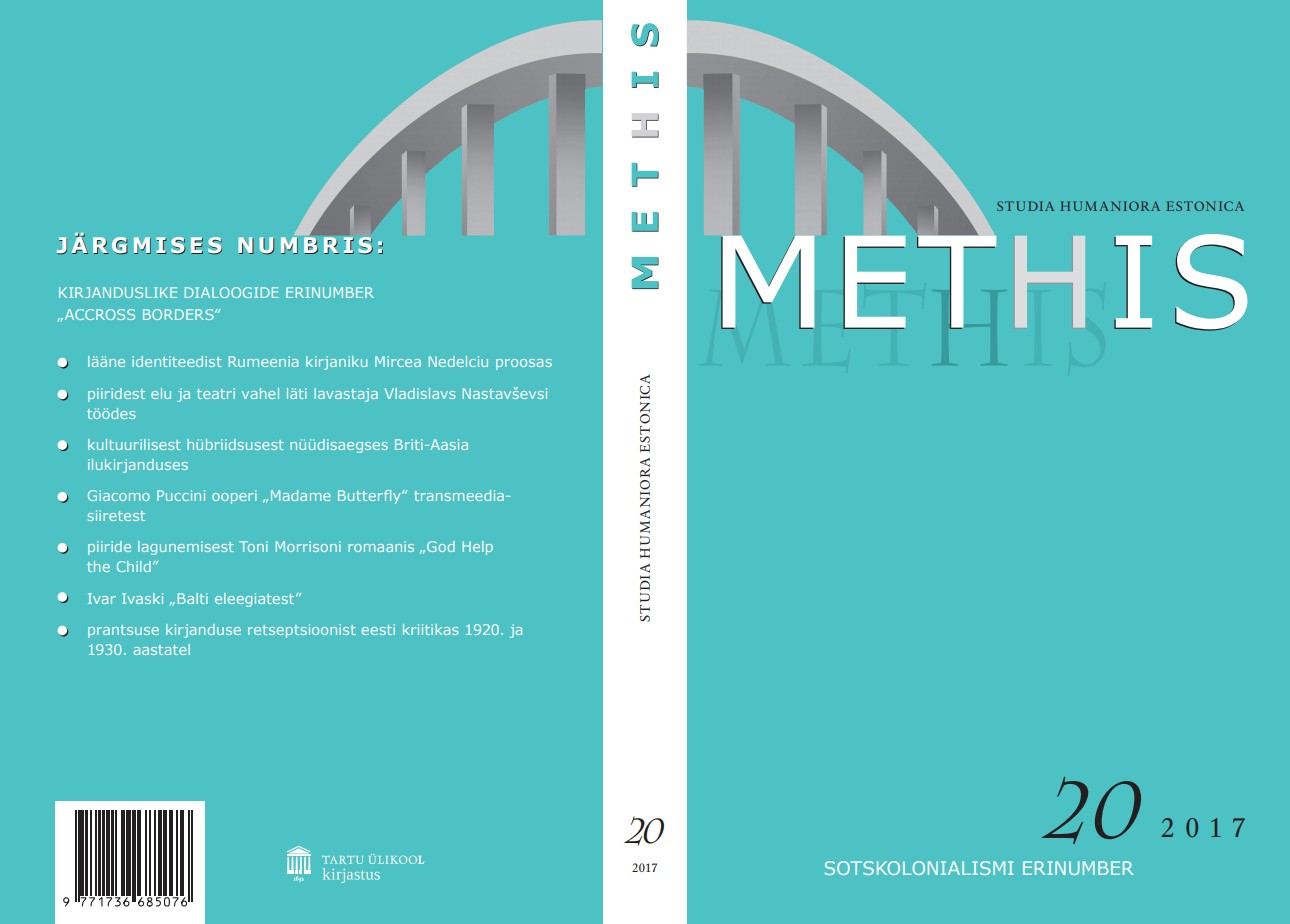Poliitiline esteetika ja selle empiirilised rakendused: nõukogude ühismajand kui spetsiifiline tajumaailm / Soviet Aesthetics and its Empirical Applications: the Collective Farm as a Specific Sensorium
DOI:
https://doi.org/10.7592/methis.v16i20.13891Keywords:
poliitika, esteetika, nõukogude aeg, kolhoosid, ideoloogia, politics, aesthetics, Soviet era, kolkhozy, ideologyAbstract
Artikkel keskendub nõukogudeaegse, eriti stalinistliku perioodi ühismajandi mudeli põhjal
loodud spetsiifilise ruumi- ja ajakogemuse kirjeldusele ja analüüsile. Püüdes esile tuua mõningaid iseloomulikumaid jooni selles tajukogemuses, vaatleb artikkel ühismajandit ühelt poolt radikaalseid muutusi produtseeriva sotskolonialistliku tööriistana, teisalt aga uut inimtüüpi tootva seadena. Käesolev uurimus mõtestab vaadeldava nähtuse spetsiifikat eelkõige esteetiliste uuringute raames, keskendudes tajukogemuse poliitiliselt suunatud teisenemisele. Uurimus on osaliselt inspireeritud ka autori isiklikust lapsepõlvekogemusest hilise ühismajandi tingimustes, selle eesmärgiks oli jõuda mainitud sensooriumi tähenduslike elementide sidusama analüüsini, võttes aluseks tekstid, mis ühel või teisel viisil peegeldavad uuritava sensooriumi tingimusi.
The article explores the specific sensorium of collective farms, especially kolkhozes, as they were created during the Soviet era in the countryside of occupied Estonia. It aims at examining the collective farm primarily not as an economic system, but as an aesthetic phenomenon and as a universal utopian model that served to translate the Marxist-Leninist ideology and its multiple implications into reality. It has to be emphasized that aesthetics is not defined here in the traditional meaning of referring to a set of aesthetic values, nor is it considered as referring to the arts, but is interpreted as referring etymologically to the experience of time and space, both individually and collectively.
During the World War II, as a result of the withdrawal of the Nazi army, Estonia was reoccupied by the Soviet army. Although some sovkhozes or state-owned farms were created already shortly after the beginning of the first period of occupation and annexation of Estonia by Soviet Russia in 1940, it was only in the late 1940s that it was decided by the party authorities to proceed to a rapid and massive forced collectivization that followed more or less the model already widely in use in the whole Soviet Union. The effects of the forced collectivisation, accompanied by a mass deportation that took place on March 1949, turned out to be extremely devastating for the local communities in Estonia. The forced collectivisation paved the way for radical changes of the whole sensorium.
Nevertheless, the article does not aim at establishing historical facts or bring new information concerning the systematic Sovietisation of the society, it rather tries to analyse the specific atmosphere that encompassed the human action. In order to examine the specific sensorium created in the collective farms of Soviet Estonia, the article makes use of some concepts borrowed from French theorists Henri Lefebvre and especially Jacques Rancière. Although neither Lefebvre nor Rancière have explicitly written about the Soviet system, it nevertheless appears that their concepts, for example that of production of space (and time) by Lefebvre or that of distribution of the sensible by Rancière are productive and relevant in elucidating the main features of the sense experience specific to the model of a collective farm. From the distribution and articulation of time and space to the ideologically determined modes of being that characterised the ordinary life of the workers in the early kolkhozes, the article attempts to determine the key features of what makes up the sensorium of collective farms. Undoubtedly, an important feature is a shift between the private and the collective; collective farms established a collective sensorium with its specific affective model, the private sphere of life being marginalised and controlled in most aspects. To illustrate the ideological pressure on society, it suffices to refer to the manifold utopian narratives, often naive and manipulative, which were spread systematically by party members, agitators and other proponents of collective farms. These utopian narratives attempted to convince everybody that kolkhozes stood at the forefront of modernisation and that their advantage over individual farming was self-evident.
It has to be emphasised that collective farms, especially kolkhozes, submitted to the rule of the communist party and served as tools of Soviet neo-colonialist politics that attempted to rapidly change not only the mode of economic production, but also to produce a new mode of reality that would conform to the predicaments of the Marxist-Leninist ideology. Moreover, individual subjects were also invited, within the strict ideological limits, to contribute to the production of this new reality. Thus the production of a new sensorium was in fact accompanied by the production of new subjectivities, a necessary element on the way towards the utopian future where social antagonism would be eliminated and happiness and prosperity would be accessible to all who would accept the ideological requirements of the Soviet power.
While shedding light on the transformations that took place within the complex sensorium of collective farms, this article argues that the sensorium of the collective farm played a crucial role in the Sovietisation of the whole society. Its establishment also functioned as a method of control that would exclude all deviations, thus contributing to the production of a new Soviet subjectivity.


